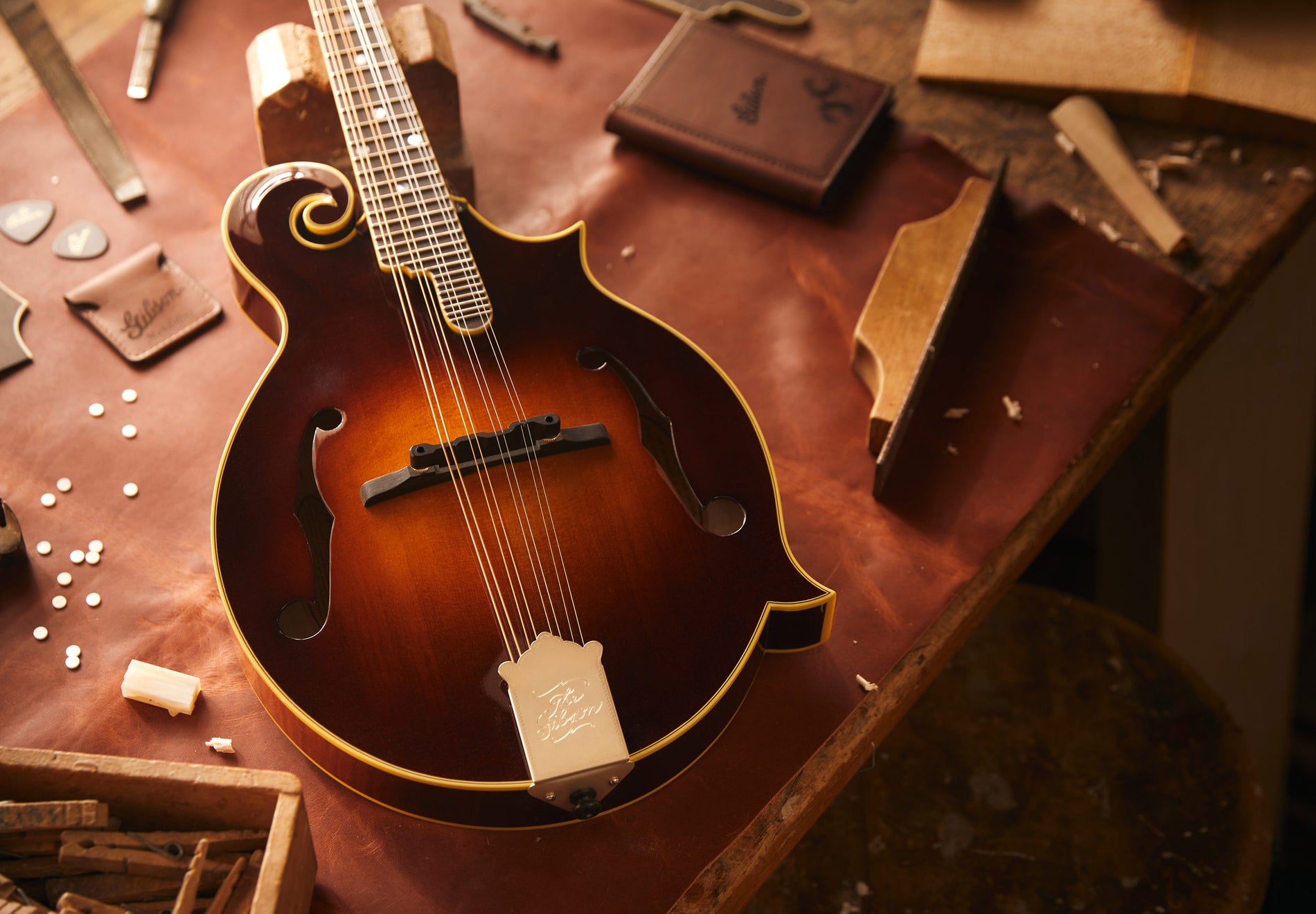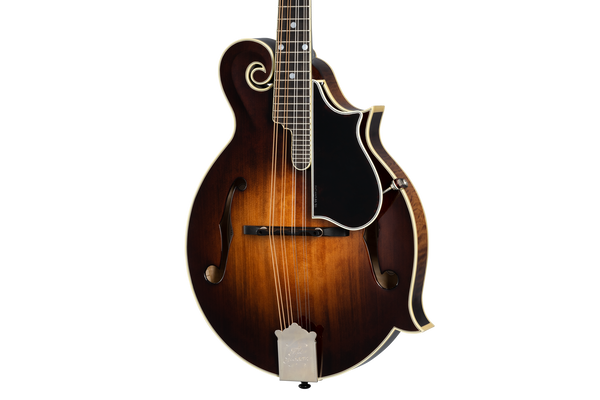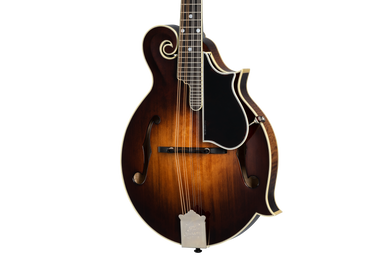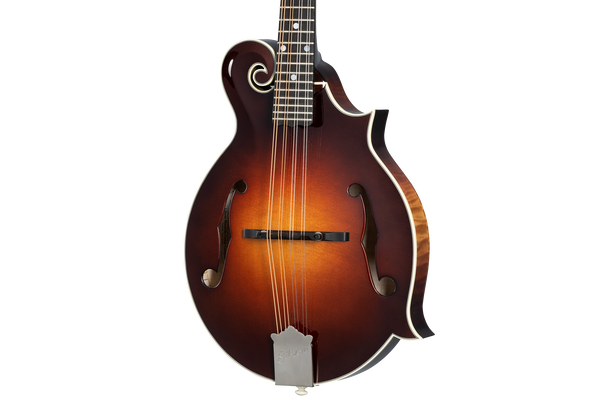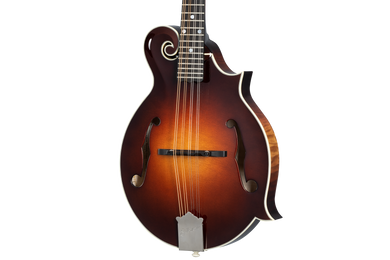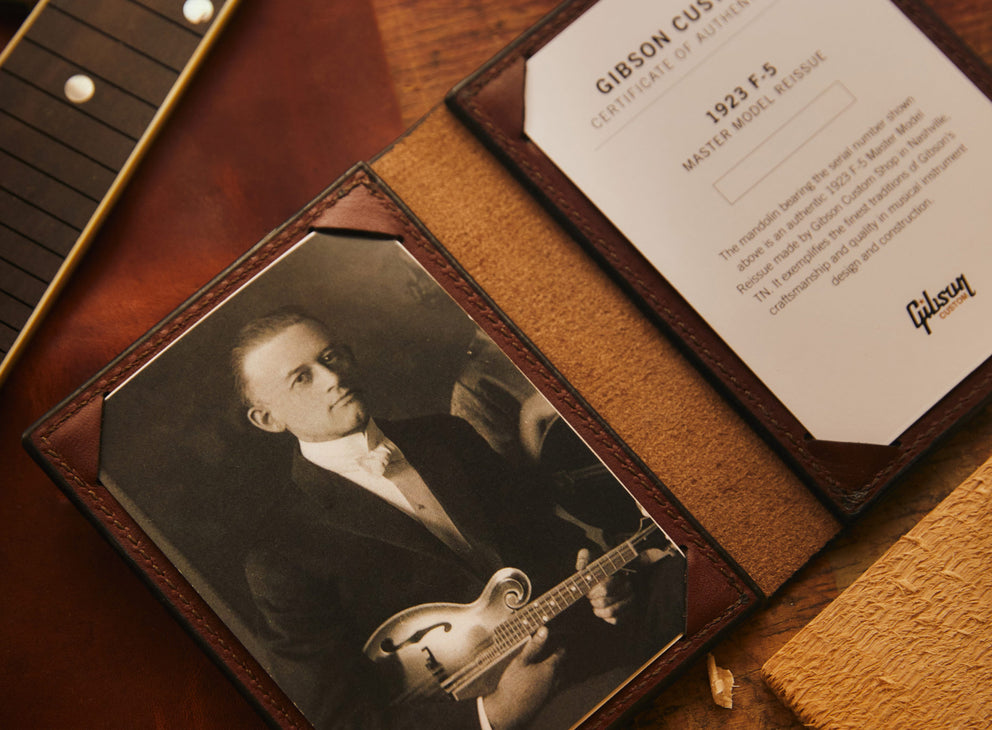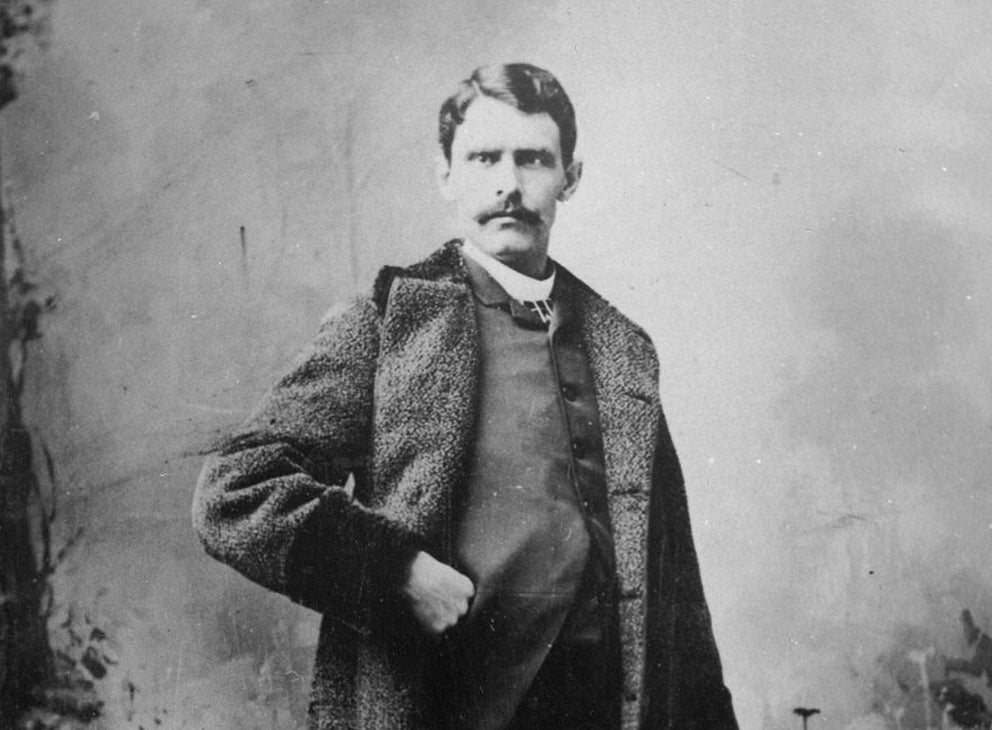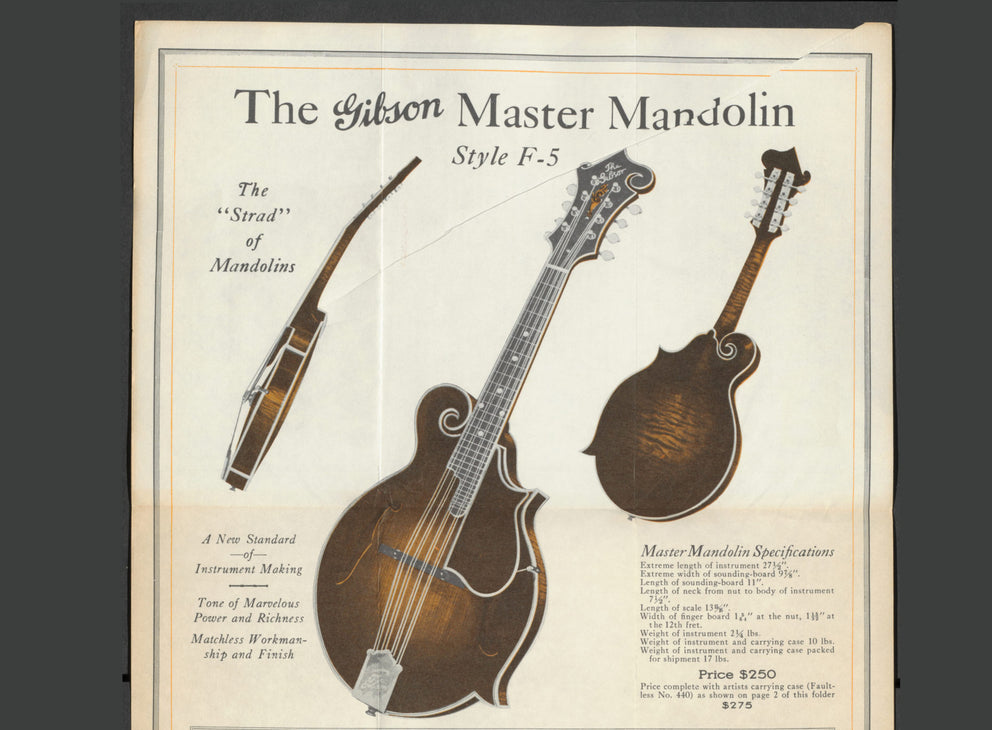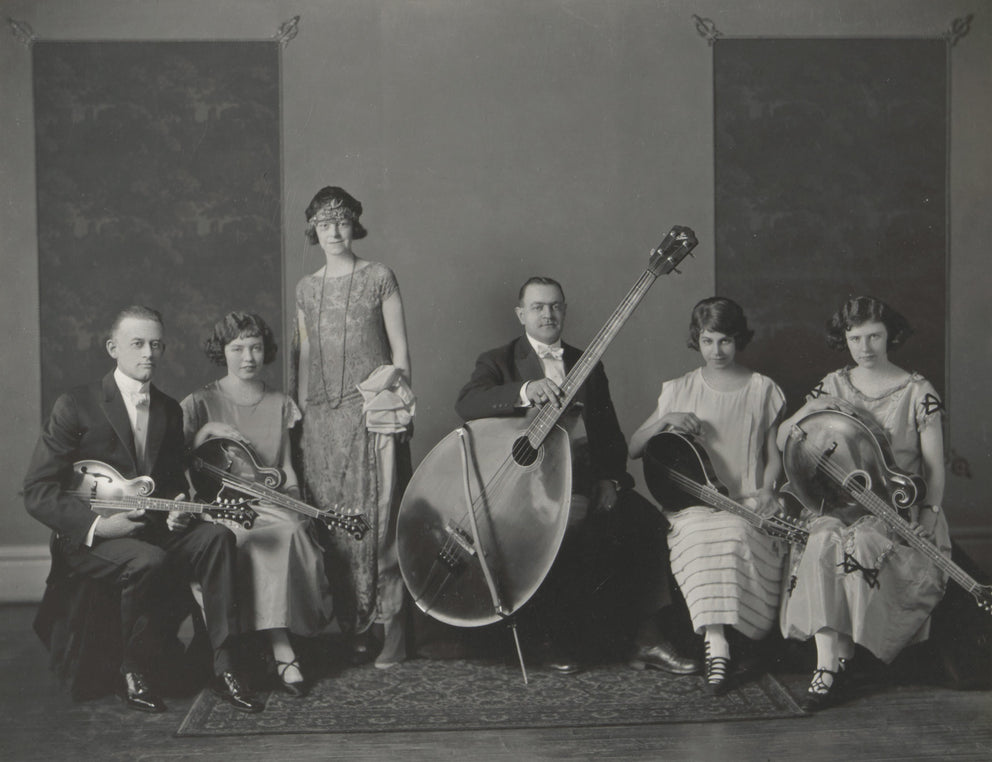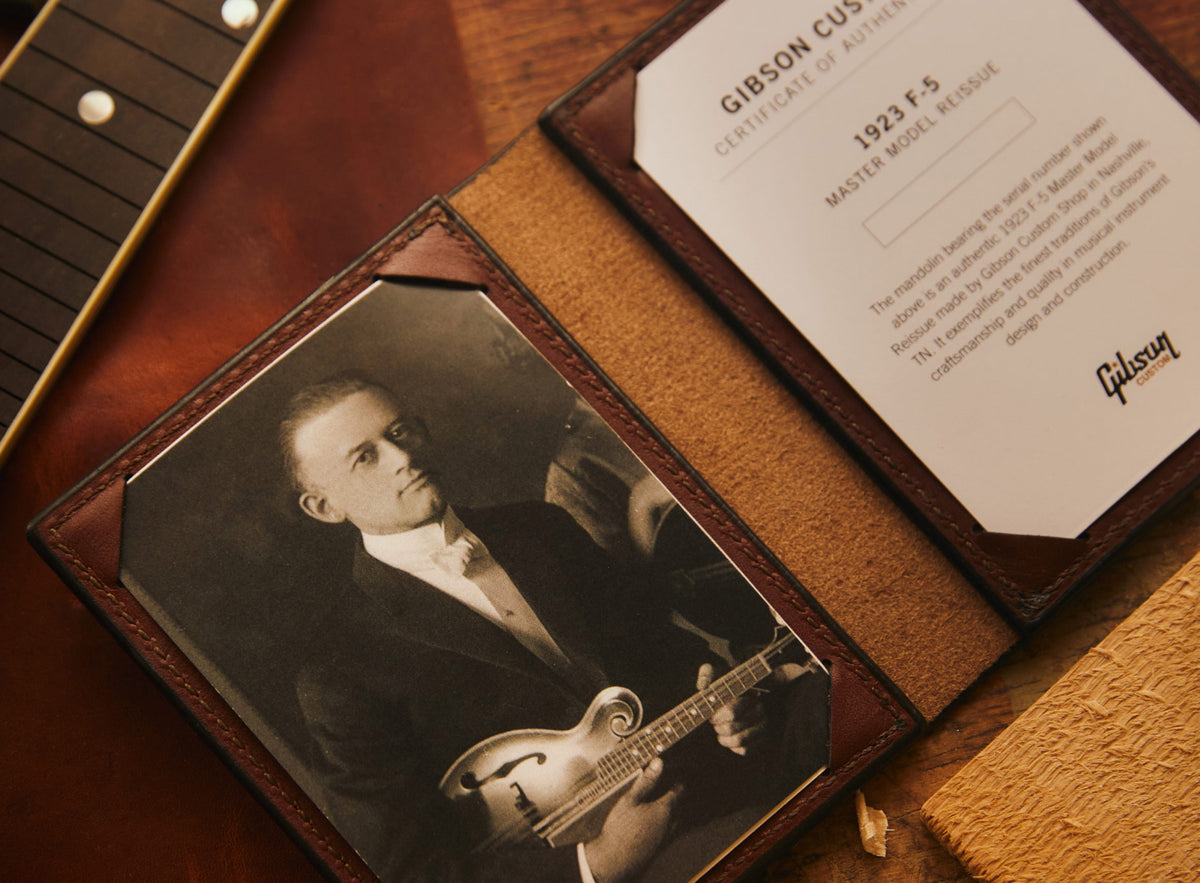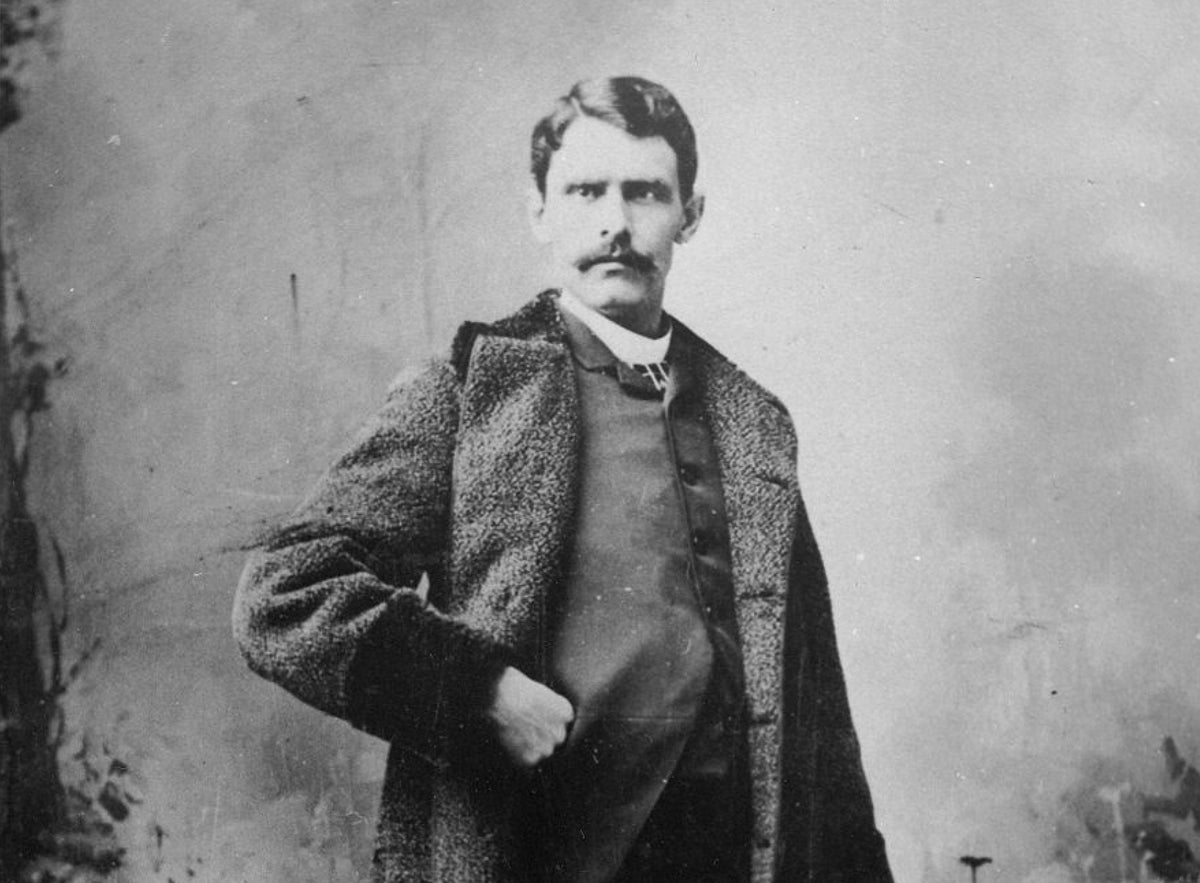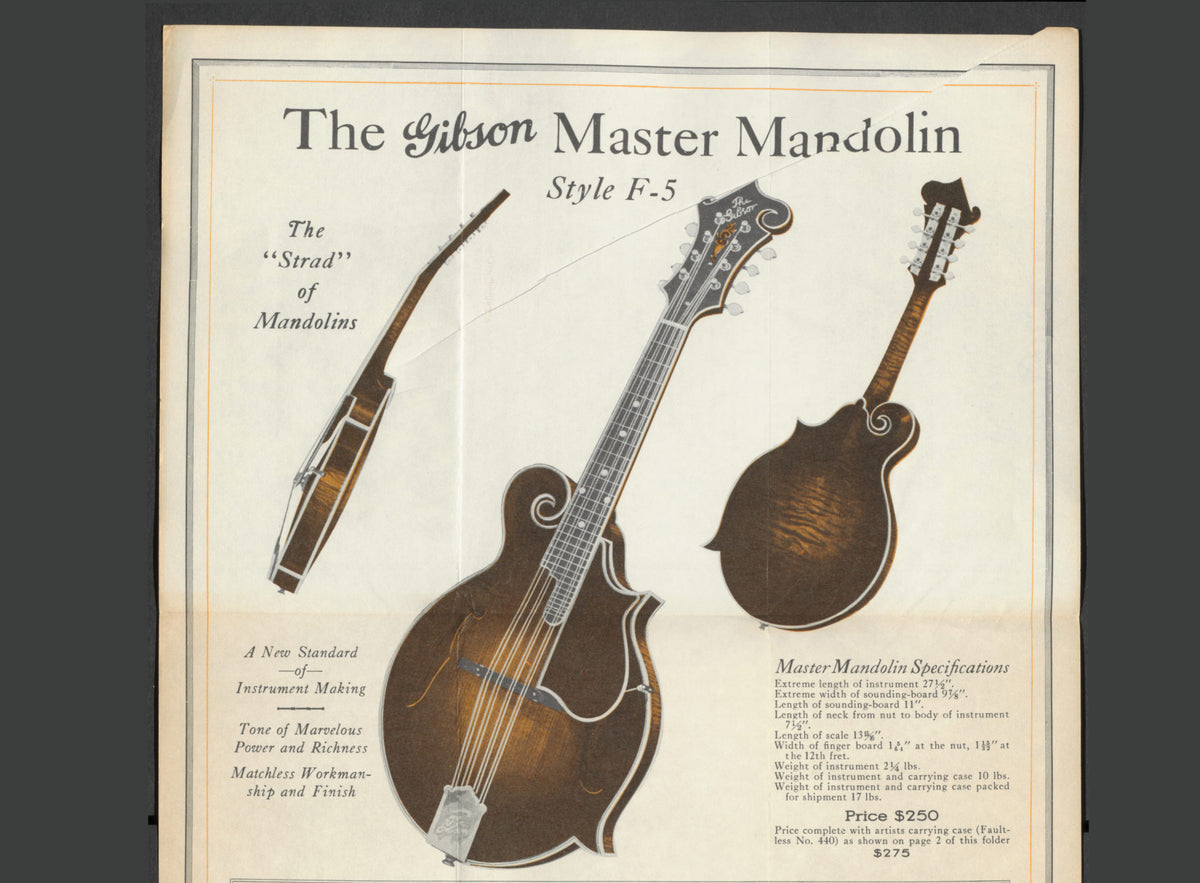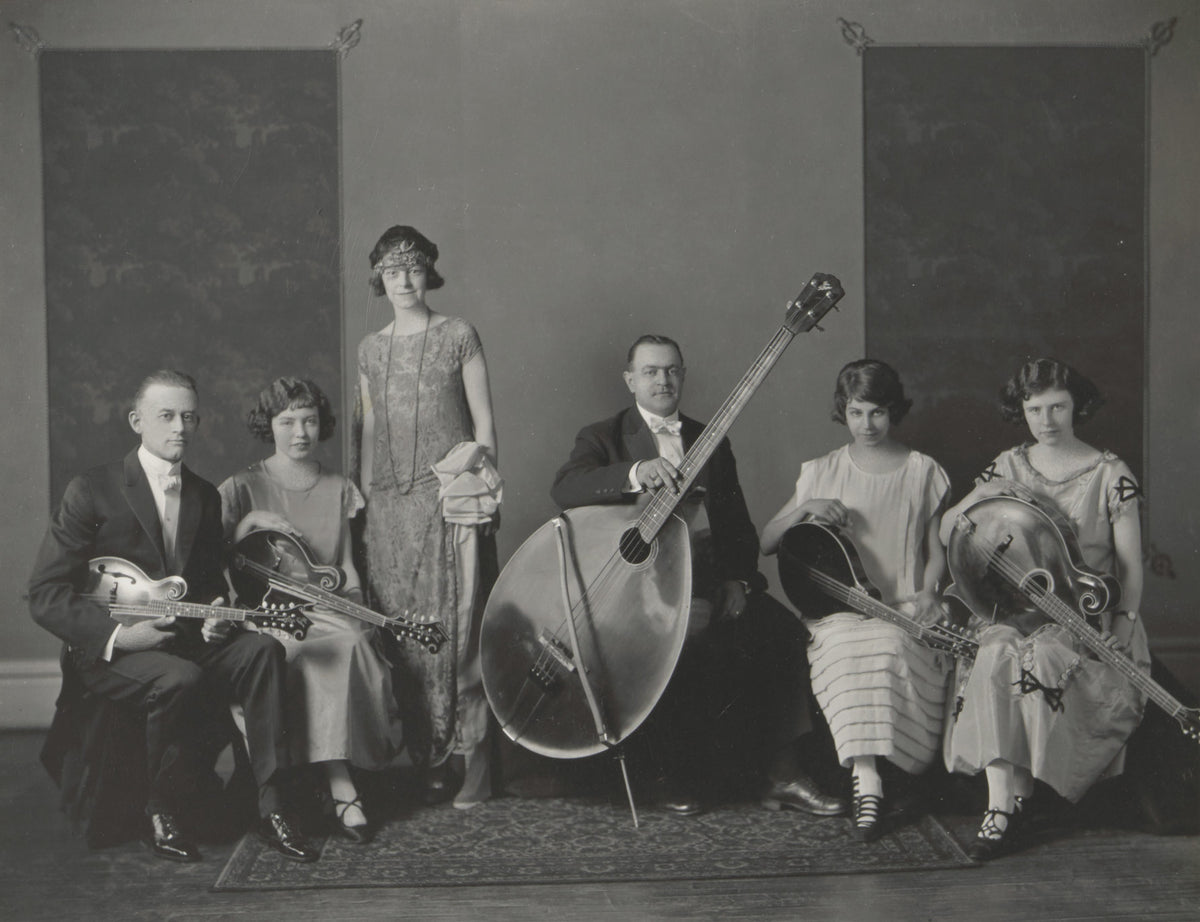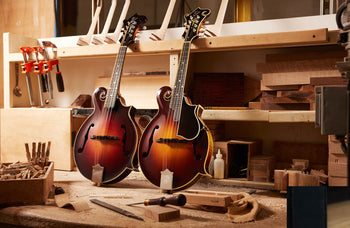Using 3D scans, scientific analysis, and Lloyd Loar’s original production notes, we’ve recreated the mandolin model that defined the sound of bluegrass and changed the course of music history.
Game-changing features of the F-5 included the shift from a central soundhole to f-holes, a longer neck, which repositioned the bridge further away from the tailpiece, redesigned bracing, and the fingerboard extension raised off the top so it could no longer dampen vibrations. Loar’s F-5 Master Model mandolin remains the high-water mark for mandolin tone more than 100 years after its inception.

